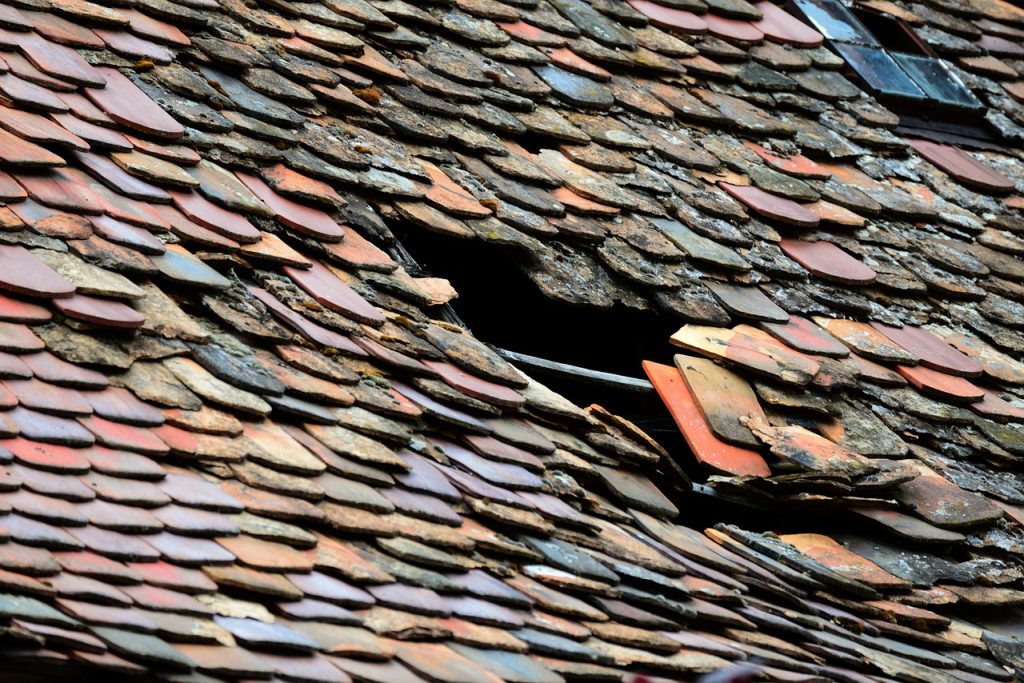Did you know that it can be tough to spot if your home has water damage from a leaking roof? Water damage to roofing can occur in various ways, and it’s not always easy to tell whether the water on the ceiling is coming from a leak or just condensation. Such leaks can lead to structural damages, mold growth, and increased electricity use.
This post will help you spot the signs of water damage if your roof is leaking so you can take action before it’s too late.
Signs of Water Damage from Leaking Roof
That small leak you ignore every time water drips into your room could be a tell-tale sign of a roof leak. Here are some leading signs that could mean you have a severe roof leak that needs to be fixed immediately.
Visible Water Stains/Marks on Your Ceiling and Walls
If you have visible water stains or marks on your ceiling, these could be because of the heavy rainwater coming from outside. Another reason is that there’s too much moisture in the air, and it accumulates as droplets at one particular point.
It gets worse if these water stains are visible on your walls as well. This means that the water damage is more severe and is getting through the ceiling to your walls.
Mold and Mildew Growth
Water damage to roofing causes mold growth because of the moisture in your ceiling or walls — mainly if you live near a body of water like a lake, river, sea, etc. This will also cause bad smells as well as discoloration of the surface.
According to FEMA, it takes only 24 to 48 hours for mold and mildew to grow following exposure to water. This means spotting mold early enough could significantly help solve the leaking problem and avert any further damage.
Paint Bubbles on Ceiling
If you start noticing bubbles or discoloration on your ceiling, this could mean that there is water damage to roofing somewhere in your house, and it’s seeping through the paint layers. More importantly, if you see these warning signs, act before they spread further.
If you’re not sure about the bubbles, you can easily take pictures of the affected areas to get them analyzed by an expert. The expert can then advise accordingly based on what they see.
Moldy Smells
If you can’t visibly spot the mold or mildew on your roof or ceiling, the smell could help. If your house starts smelling moldy or damp, this is also a sign that there could be water damage somewhere up on the ceiling.
You should trace the source of the smell and check if there is any water damage on the roof or wall. You can observe this with your eyes, but it’s always better to elicit the help of an expert.
The Ceiling Texture
If you start noticing that the texture of your ceiling has changed after a few months, then this might be another sign of water damage. The texture could change to something that looks like a bubble, or it could seem as if the ceiling is absorbing the water.
A change in texture is different from plaster bubbling, a sign of water seeping through the roof. But if you spot either of these signs, then there is a good chance that the water is quickly destroying your roof.
Dropped Ceiling Tiles
Another sign of roof damage is when some tiles drop off your ceiling. If there is a large area with no tiles, the water has eaten away at something in particular and needs to be fixed immediately.
Dropping ceiling tiles should be a call for alarm as this depicts a roof with a lot of damage. You need to act quickly if you notice this happening.
A Sudden Draft
If you notice that the temperature of certain rooms in your house is noticeably colder than it should be, then this could indicate roof damage from a leak.
Ensure to inspect the roof and see if there is a hole or area eaten away by water damage from a leak. Many things could cause this, so you must act quickly once this happens.
Damaged or Missing Shingles
Another sign of water damage to your roof is a missing shingle or a shingle that has been damaged. Since the roof is usually under a lot of pressure from snow and rain, it can be easy for this to happen if you have not taken proper care of your home’s exterior.
Once again, inspect the structure and look for any areas compromised by water or weathering over time. Note that this should include looking at flashing around chimneys and vents as well.
Gutters Clogging up
Finally, make sure that your gutters are not clogged. This is another indication of water damage since the water will have nowhere to go once it reaches this point on your roof.
Of course, if you notice any stains or mold growing around gutter areas, there could be a problem with debris getting stuck in these places and preventing water from flowing down the roof correctly.
You can easily manage this problem through regular inspection of your roof, gutters, and downspouts. Doing so can help you find water damage before it becomes too severe of a problem for your roof.
If you realize your gutters are clogging up, take the necessary steps to eliminate the problem. You can clean out the gutters and downspouts as thoroughly as possible, ensuring you remove any mold or organic materials from the gutter system.
Work with a Professional Roof Contractor
It’s important to always check on your roof and downspouts before any rainfall or snowfall occurs as well. If there are any clogs in the drain system, you run a high risk of experiencing water damage to your roof and walls.
If you notice any signs of water leakage or dampness on either your ceiling or foundation wall, you must hire a professional contractor immediately. Doing so before the problem gets worse will help you save time and money in the long run. Contact us today, and one of our roofing professionals can come by and inspect your property to see what the problem is.



